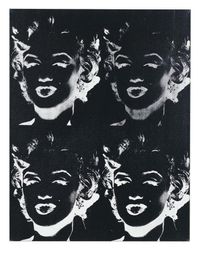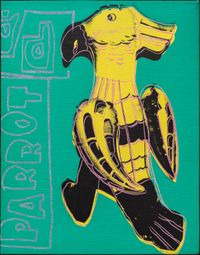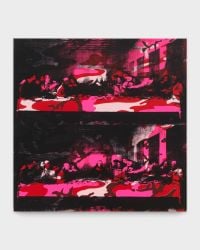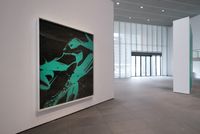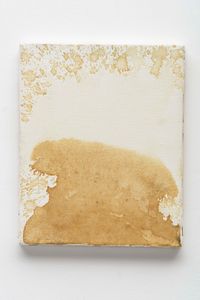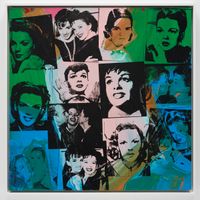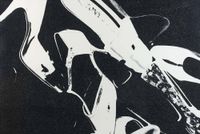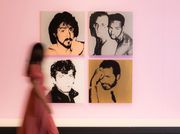American artist Andy Warhol was a leading figure in the American Pop Art movement in the 1960s and 70s. His works are often comprised of images appropriated from popular culture and created in a variety of mediums including drawing, painting, printmaking, photography, film, and sculpture. Prior to working as an artist full-time, Warhol had a successful career as a commercial illustrator for several high-profile publications including Vogue, Harper's Bazaar, Glamour, and The New Yorker. The artist first exhibited his works at the Hugo Gallery, New York in 1952 and was later included in his first group show at the Museum of Modern Art in 1955.
Read MoreIn the 1960's, Warhol rose to prominence with his ground-breaking paintings and screen-prints of commonplace American objects such as Campbell's soup cans, dollar bills and Coca-Cola bottles. Arguably the most productive decade of the artist's career was in the 1960s when Warhol launched his studio, known as 'the Factory,' which brought together an eclectic crowd of like-minded liberated individuals including writers, actors, musicians, and drag queens. At this time Warhol also began making films using the same deadpan approach to the commonplace. They were also further evidence of an interest in the serialism and automatism as found in the works of musician John Cage and writer William Burroughs.
Warhol's art seemingly embraced consumerism, yet alongside the images of celebrities such as Marilyn Monroe, Elvis Presley, and Marlon Brando, Warhol was also producing works that depicted darker subject matter such as police attacks against civil rights protesters, the death sentence, and car crashes. Ultimately it was the ubiquity of mass media imagery and how it flattened all events into a consumerist landscape which was central to Warhol's practice.
During the 1970's Warhol became more preoccupied with his entrepreneurial pursuits than his artistic practice and established the influential magazine Interview and published a book titled The Philosophy of Andy Warhol. By the 1980's, Warhol's profile was growing once again due to his association with Neo-Expressionist artists such as Jean-Michel Basquiat, Julian Schnabel, and David Salle. Warhol unexpectedly died in 1987.The Andy Warhol Museum in the artist's hometown of Pittsburgh, Pennsylvania, holds the title for the largest museum dedicated to a single artist in North America. His works are held in major public and private collections worldwide.
Frances Hodgson | Ocula | 2016
